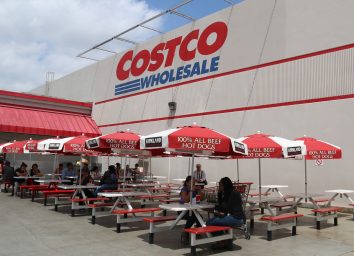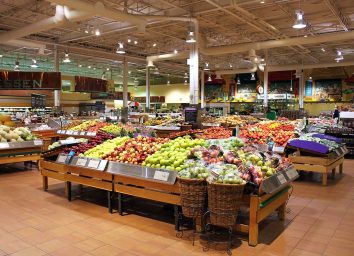These 5 Grocery Items Are Cheaper Than Ever Right Now

The grocery industry has been facing major disruptions. The combined effects of the pandemic, climate change, and economic uncertainty over the past couple of years have culminated in a series of supply chain breakdowns. For the consumer, this means supply shortages, shipping delays, and temporary store closures are becoming more commonplace – and all of the added production cost to suppliers is driving up food prices.
The U.S. Bureau of Labor Statistics' Consumer Price Index report for January 2022 was released on Feb. 9, and it tells the story of cost trends for every spending category over the past year. Now the numbers are in, and since January 2021, "food at home" spending has increased 7.4%. Consumers should use this number as a benchmark, Phil Lempert, the consumer behavior analyst and founder behind Supermarket Guru, told Eat This, Not That! "Anything that's substantially less [than the 7.4% increase] is a deal," said Lempert. "When you see those products that have minor decreases, that's the time to stock up."
So what should you reach for at the supermarket to save money? While unexpected fluctuations are bound to happen over the next several months, there are five food items we've noticed grocery chains marking down lately.
Related: 6 Things You'll See at Costco This Year
Beef, Poultry, Pork
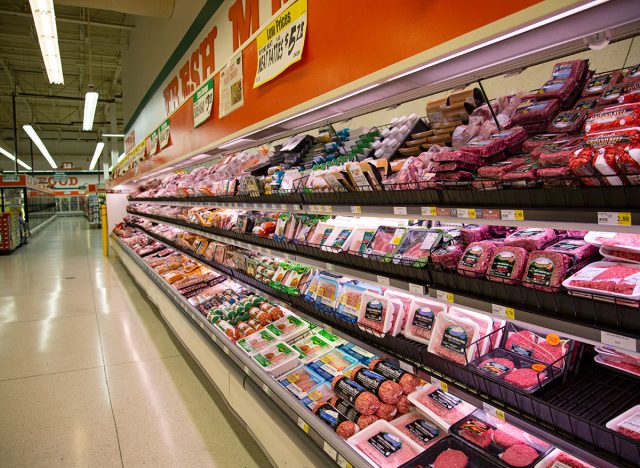
Due to a myriad of supply chain complications over the past year, meat prices have been riding high – so much so that consumers have been on the hunt for suitable protein-packed alternatives.
However, the January 2022 CPI report showed a seasonally adjusted price decrease by 0.4% for meat from November to December 2021, and the most recent report showed 0.3% decreases for beef and poultry.
This downtrend trend in cost could be temporary, but the Biden administration is poised to help bring prices down even further. CNN reported that the White House plans to designate $1 billion from the American Rescue Plan to help independent meat producers compete against larger suppliers, increasing price competition and lowering costs for shoppers.
It's unclear how these antitrust efforts will affect meat in the long term, but for now, you're likely to see the sticker price come down a bit.
One other way to save on meat? Cut out the middleman and buy your beef from a local butcher.
Chocolate
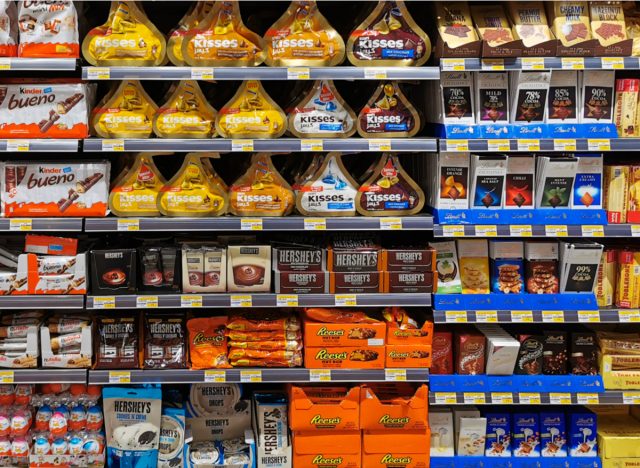
Nothing says romance like a red box of chocolates. With Valentine's Day right around the corner, USA Today found the best deals to accommodate your loved one's sweet tooth. And stores will continue to mark down their heart-shaped goodies as the holiday nears an end. Last year, a few days after February 14th, Walmart shoppers saw 75% off seasonal candy and chocolate.
If you're looking to replenish your supply of cheat-day treats for bargain prices, you'll want to hit the seasonal aisle just after you've celebrated with that special someone (especially if that someone is you!)
Seasonal Produce
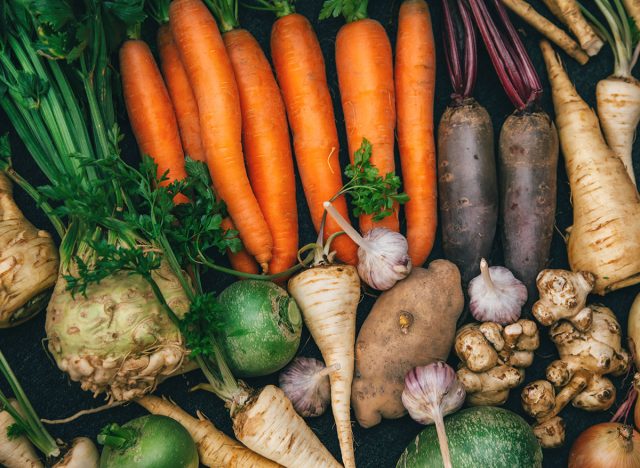
There are many reasons to shop seasonal – produce is at the peak of its freshness, with maximum nutrient content and flavor – but one of the biggest selling points might be the lowered price point. When fruits and vegetables are in season, there's a more plentiful supply, and stores will adjust the price to fit demand.
So what should you look for deals on? According to the USDA Seasonal Produce Guide, greens like Brussels sprouts and kale, hearty root vegetables like parsnips, potatoes, and yams, and fruits like avocados and winter squash are all harvested in time for the colder months.
And if you're not sure what to cook with your stockpile of seasonal groceries, we have some recipe ideas for when you're bundling up indoors.
Store Brand Items
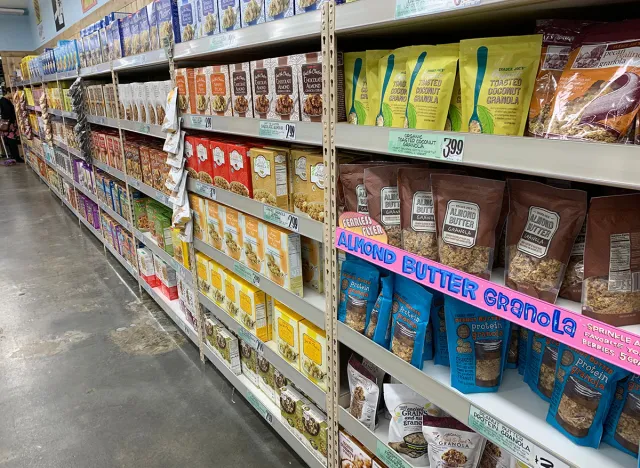
When you're trying to save in the supermarket aisle, here's a trick: choose the generic version of the item on your list over the name brand. Stores have been increasing their supply of private labels, to offer shoppers comparable products at a 20 – 25% price cut.
While some off-brand versions of your name brand favorites may not measure up, they can often come from the exact same supplier. For example, fans of Trader Joe's, the grocer loved for its signature-brand takes on everything from kale chips to ice cream, have noticed their chocolate chip cookies and green smoothies bearing a heavy resemblance to bigger names like Tate's Bake Shop and Naked respectively, as reported by Eater in 2017 – even having the same list of ingredients.
The only difference is that one gets packaged with the household name, while the other gets the store label. So by making the swap, you can enjoy the taste and quality you love without emptying your wallet.
In some cases, shoppers might even start to prefer the private label over the big brand name. "Store brands are getting better. For example, Trader Joe's does a phenomenal job of producing their private label, and their quality sometimes exceeds major brands," said Lempert.
Dollar Store Groceries
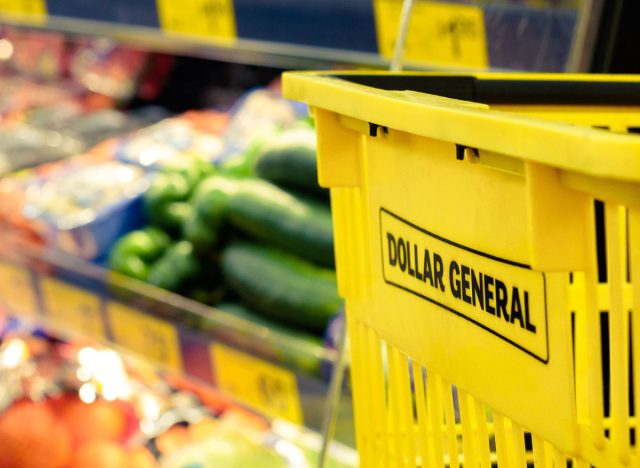
The one-buck shop Dollar General has 17,000 locations across the U.S. and has been working on supplying fresh foods in nearly 1,800 of their stores. For those who live in rural communities, the expansion provides easier access to healthy groceries at affordable prices.
The dollar store doesn't typically carry consistent products, but what they do sell is heavily discounted. "You have to be more flexible when you're in those stores, but you will save a lot of money," said Lempert.
The Dollar General website even offers online checkout, providing details about the store's product availability in real-time and allowing customers to order items for pickup at their closest Dollar General location. So if you're trying to meal plan on a budget, this is the perfect way to bag your groceries and skip getting side-tracked by all those extra temptations.


